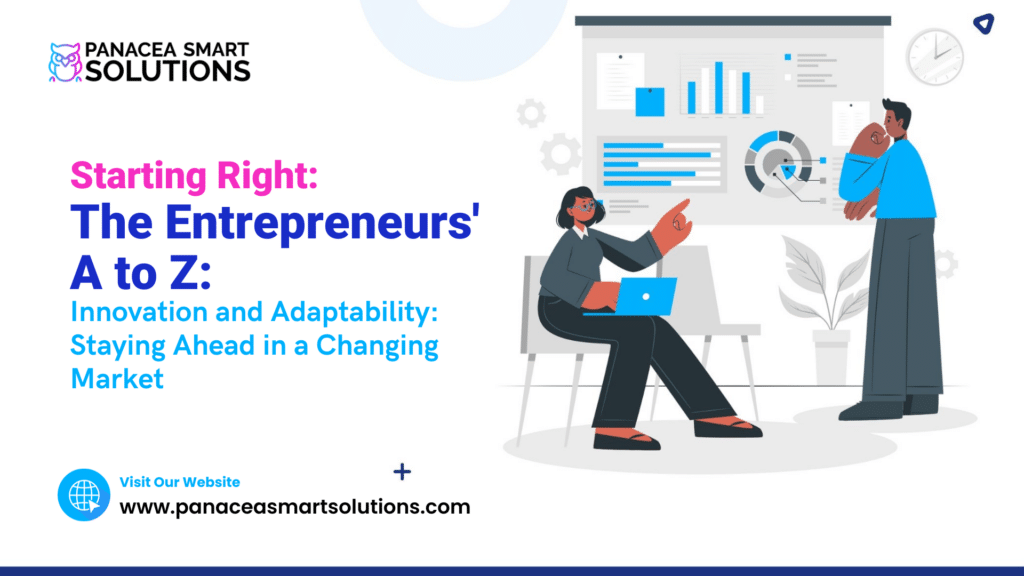Ahoy, intrepid entrepreneurs, and welcome back to our weekly voyage through the A to Z of entrepreneurship! As always, it’s Wednesday, the day we set sail on another leg of our journey, guided by knowledge, wisdom, and a touch of humor. Today, we’ll explore the dynamic duo of innovation and adaptability, the wind in the sails of every successful entrepreneur navigating the changing tides of the market.
But before we delve into the world of innovation and adaptability, let’s start with a bit of maritime humor. Why did the entrepreneur always bring a compass to their brainstorming sessions? To ensure their ideas were always headed in the right direction!
Now, let’s navigate the seas of innovation and adaptability and discover why they are essential for entrepreneurial triumph.
1. Innovation: Just as explorers seek new horizons, entrepreneurs must constantly seek new and creative solutions to meet market demands. In response to shifting market demands in the early 2000s, Netflix transitioned from a DVD rental service to a leading streaming platform, innovating to meet consumer preferences for on-demand and accessible content. By introducing streaming alongside its DVD rentals and later producing original content, like “House of Cards” and “Orange is the New Black,” Netflix not only adapted but thrived, showcasing how businesses can effectively innovate to meet evolving market needs and maintain competitiveness.
2. Adaptability: The business world is ever-changing, like the tides. Entrepreneurs must adapt to survive and thrive. Amid the COVID-19 pandemic, Chipotle Mexican Grill adapted to survive and thrive by accelerating its digital transformation. They invested in online ordering, mobile apps, and delivery partnerships, pivoting their operations to cater to takeout and delivery while adhering to safety restrictions. Chipotle’s strategic shift allowed them not only to weather the challenges of the pandemic but also to tap into the rising demand for digital ordering and delivery services, ultimately expanding their customer base and thriving in a difficult business environment.
3. Customer-Centric Approach: Like a ship adjusting its course based on the needs of its passengers, businesses should focus on meeting customer needs. Amazon, the e-commerce giant, is a prime example of a company that has consistently adopted a customer-centric approach. One of their most notable strategies is their relentless focus on customer satisfaction. They have invested heavily in technologies like personalized product recommendations, one-click ordering, and fast, reliable shipping to enhance the customer experience. Additionally, they actively seek customer feedback and use it to refine their services and offerings continually. Amazon’s customer-centric approach has helped them build strong customer loyalty, drive repeat business, and expand their market presence far beyond their initial online bookstore roots, making them a global e-commerce leader.
4. Embracing Technology: Much like a modern ship relies on advanced navigation tools, businesses should leverage technology for efficiency and growth. General Electric (GE) exemplified the embrace of technology to enhance business efficiency and growth by implementing the “Brilliant Factory” initiative. They harnessed the power of the Industrial Internet of Things (IIoT) and data analytics to optimize manufacturing operations. Through sensor-equipped factories and advanced data analysis, GE achieved real-time insights into equipment performance and production processes, reducing downtime and enhancing efficiency. Moreover, they leveraged this technology to offer predictive maintenance services to customers, creating new revenue streams. This strategic embrace of technology not only improved internal operations but also expanded GE’s business and competitiveness, showcasing the transformative potential of technology adoption in traditional industries.
5. Learning from Failure: Sometimes, even with the best navigation, you’ll encounter rough seas. Learn from failure to chart a better course. After being ousted from Apple in the 1980s, Steve Jobs returned as CEO in 1997, learned from past failures, and transformed the company into a global tech giant through a focus on innovation, design, and a customer-centric approach, exemplifying the power of learning from mistakes for future success.
Speaking of innovation, why did the entrepreneur always have a Rubik’s Cube on their desk? To remind themselves that sometimes, solving business challenges is like solving puzzles!
To master the art of innovation and adaptability, consider these steps:
- Foster a culture of innovation within your business, encouraging creativity and idea generation.
- Stay informed about market trends and emerging technologies to adapt your strategies accordingly.
- Listen to customer feedback and use it to refine your products or services.
- Embrace a growth mindset that sees setbacks as opportunities for improvement.
For further reading, I recommend the book:
1. “The Innovator’s Dilemma: When New Technologies Cause Great Firms to Fail” by Clayton Christensen: Explore the concept of disruptive innovation and how it can transform industries.
Your mission this week is to explore this book, reflect on your approach to innovation and adaptability, and set sail on the journey to staying ahead in the ever-changing entrepreneurial landscape.
Join us again next Wednesday as we continue our voyage through the A to Z of entrepreneurship. Until then, keep innovating, keep adapting, and keep sailing toward success!





